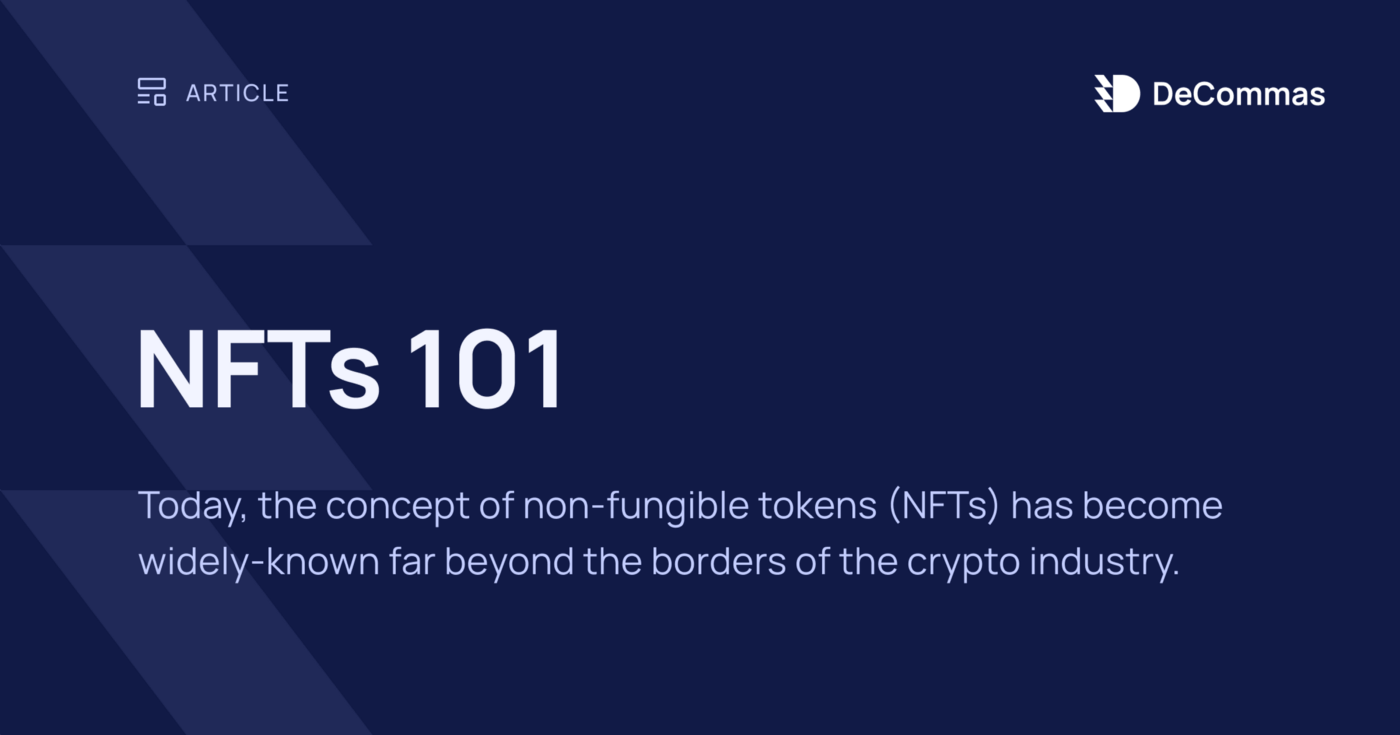
NFTs 101
Today, the concept of non-fungible tokens (NFTs) has become widely-known far beyond the borders of the crypto industry. Thus, the acronym “NFT” was recognized as the word of the year 2021, according to the British Collins Dictionary. In fact, the hype around NFTs has increased with the popularity of blockchain games, and is likely to grow even further with the development of metaverses.
In this article, we are going to talk about what non-fungible tokens are, take a closer look at their features, perspectives and reasons for their popularity, and try to understand what role NFTs will play in the emergence of virtual worlds and metaverses.
NFTs in a nutshell
What are NFTs?
NFTs are unique digital assets that carry data about their ownership and assign corresponding rights to their owner. The unique feature of NFTs is the fact that they are non-fungible, and the information associated with the owner and features of the token is recorded in a smart contract. NFT users can secure ownership of any objects, such as images, videos, music and files, confirming their ownership rights.
Token standards
As the development of alternative networks out there increases, so does the number of NFT standards. They also differ depending on the objectives of the token. Ethereum-based ERC-721 standard tokens were one of the very first implementations of NFTs. These tokens are used to create in-game assets, collectibles, cards, characters and art objects.
With the development of blockchain technology and the expansion of the decentralized space, utilization of NFTs continues to grow in turn. For example, the ERC-1155 standard allows multiple ERC-721 tokens to be combined into one smart contract. And as blockchain gaming evolved, other standards appeared, aiming to make the interaction between players and the gaming ecosystem broader and more functional. This is how the ERC-998 and ERC-875 standards came about, along with tokens for other blockchains and ecosystems.
NFTs use cases
Since the first NFT experiments back in 2014, the number of application options and platforms has grown considerably. The first popular NFT-related applications used to date appeared in 2017–2018, including CryptoKitties, NeonDistrict, AxieInfinity, Decentraland, and more.
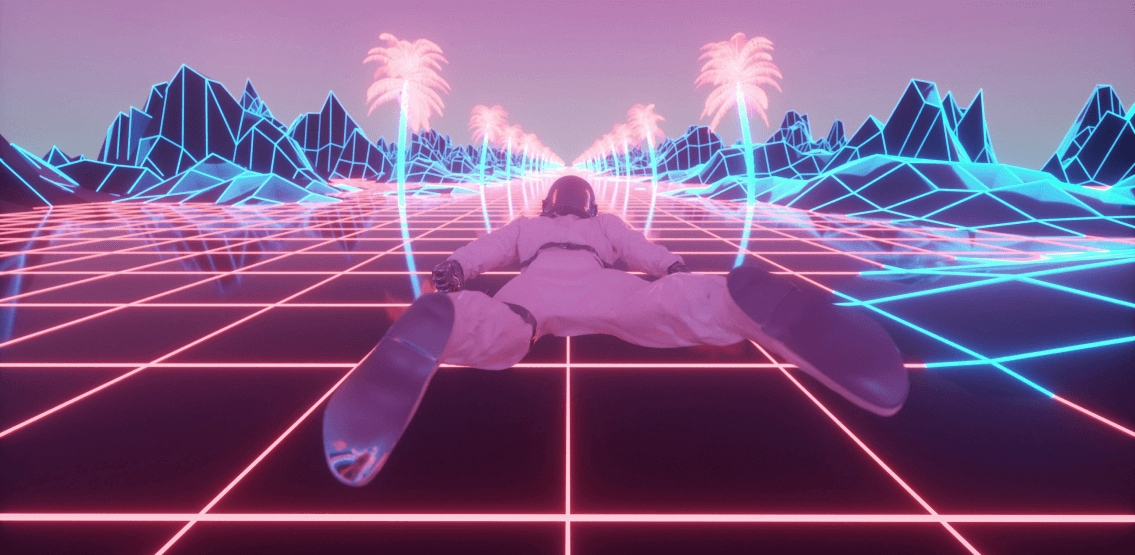
The ability to transfer real objects into virtual spaces is already being used with art, collectibles, media, identification and credit assurance, and this functionality is continuing to find more and more use cases and applications as time goes on. As the decentralized space expands and DeFi applications grow in popularity, so too does the trend for blockchain games like Play2Earn and Learn2Earn, as well as the metaverses.
Games, applications, exchanges and metaverses are launched on various networks; their growth is exponential, while competition between the platforms provides faster transactions and lower fees for interacting with smart contracts.
Useful resources and tools
Marketplaces
The most popular marketplace for trading and creating NFTs is the OpenSea platform. Here, you can buy digital items to use in games and metaverses, music tracks, domain names and collectibles. Each user on the platform can create their very own NFTs and put them up for sale. The platform provides filters to search for tokens and collections, as well as statistical data on collections by category or network.
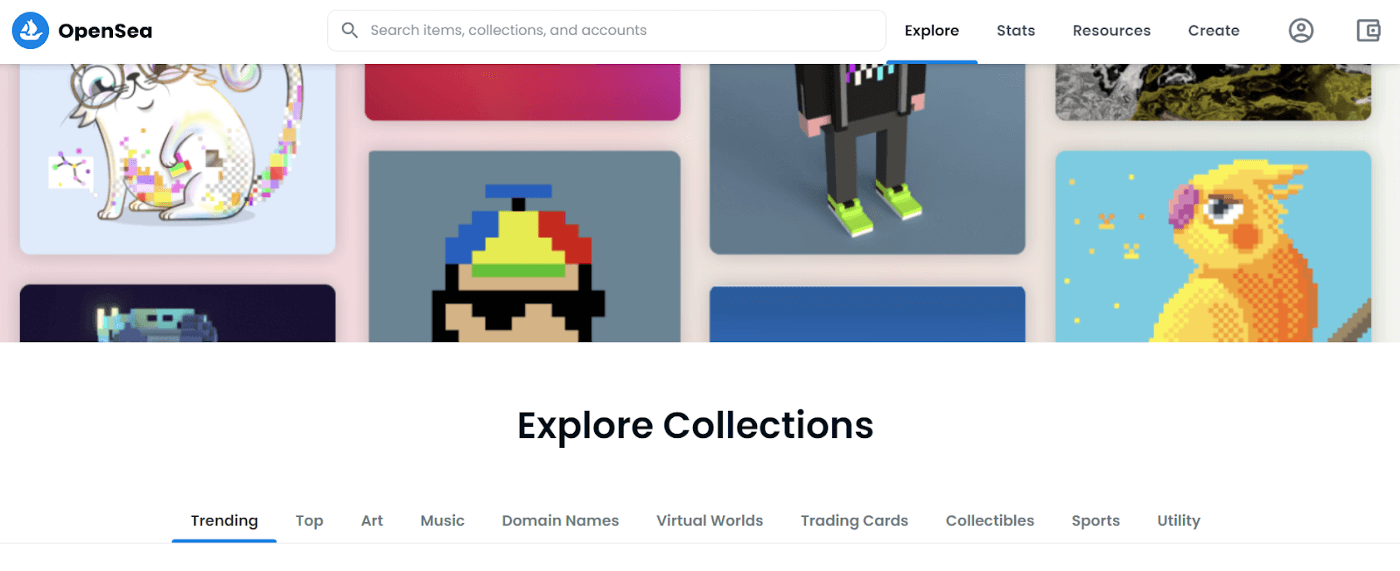
The Rarible platform is a marketplace for trading and creating unique tokens with a native RARI token. It features virtual artwork, collections and custom tokens, and hosts auctions. The NFTtrade crosschain platform is the aggregator that supports BSC, Avalanche and Polygon networks.
The largest platform on Solana for trading NFTs is Solanart, where hundreds of different NFT collections can be found, along with game objects and art objects. Tools are available for users to easily find and purchase the necessary NFTs, and the marketplace’s trading volume is more than 500 million.

You can use TerraNFT to find NFT projects about to launch in the Terra network, where all the necessary data is available. A handy tool for finding unique tokens from across a variety of platforms is the NFTrade crosschain aggregator. Marketplace features are available on the platform, complete with tools and filters for easy searching, as well as NFT creation and exchange capabilities.
Applications and data
DappRadar provides statistics and information about decentralized applications. The NFT and Games sections include useful market and statistical data on NFT platforms, collections and tokens, as well as valuable information on projects and applications collected from 11 blockchains.
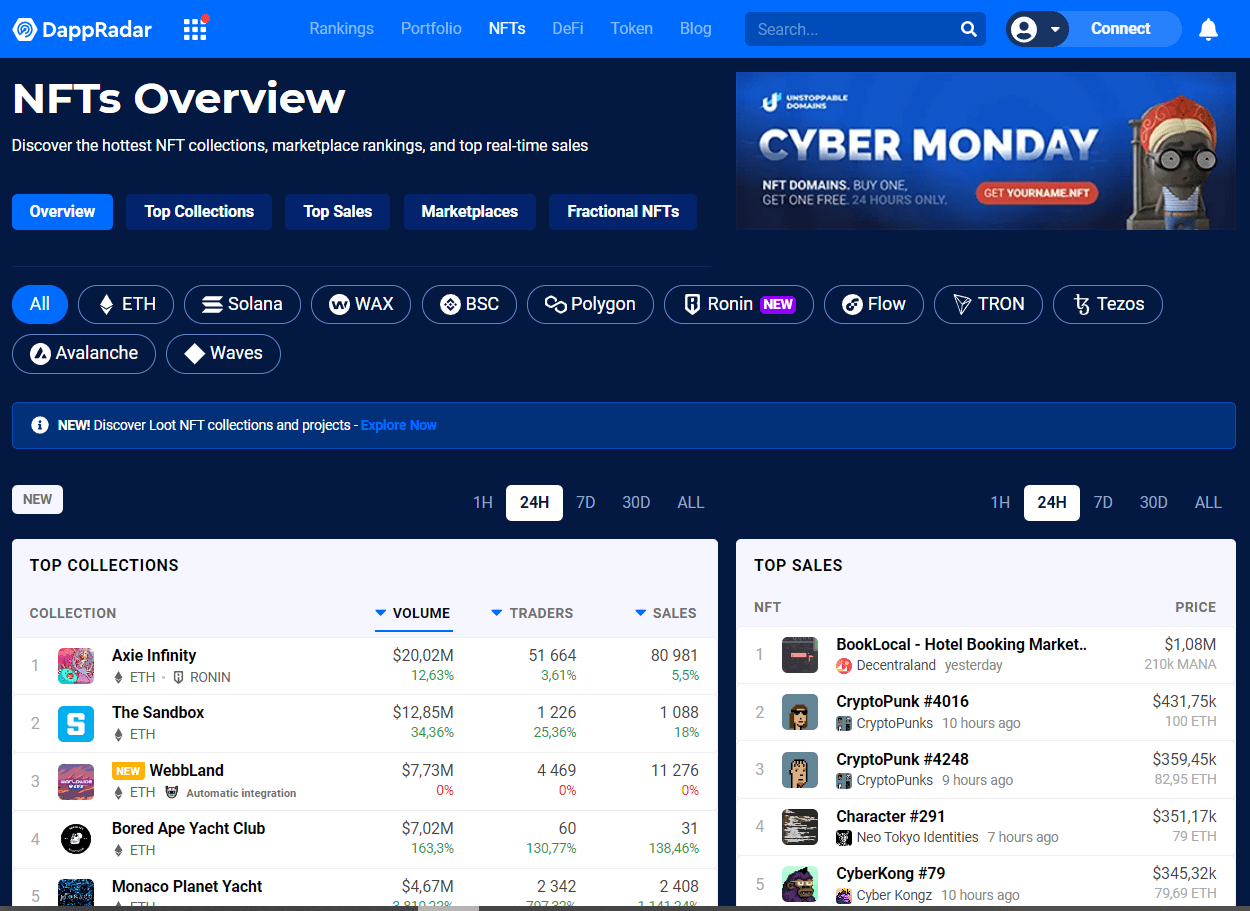
An NFT section is available on Coinmarketcap, which includes statistics on NFT collections and assets. Here, you can also find information about upcoming sales and launches of new NFT venues and games.
NonFungible provides real-time information on asset price changes, analysis of NFT markets, project ratings and descriptions, as well as data on assets within projects. Categories available on the site include collectibles, metaverses, games, art, DeFi and utilities.

You can use NFT-Stats to track token and collection activity. Here, you can sort collections by sales volume and number of transactions, as well as view information about the assets. The Rarity Explorer interface allows users to filter the presented search results to find assets based on their rarity scores.
Outlook
According to the analytics resource Cryptoslate, the total NFT market is now estimated at nearly $60 billion. Due to the growth of the cryptocurrency market and the hype around blockchain gaming, the number of users has experienced a dramatic increase over the last couple of months. For example, the number of users playing blockchain games has nearly tripled since August, to exceed 1 million players.
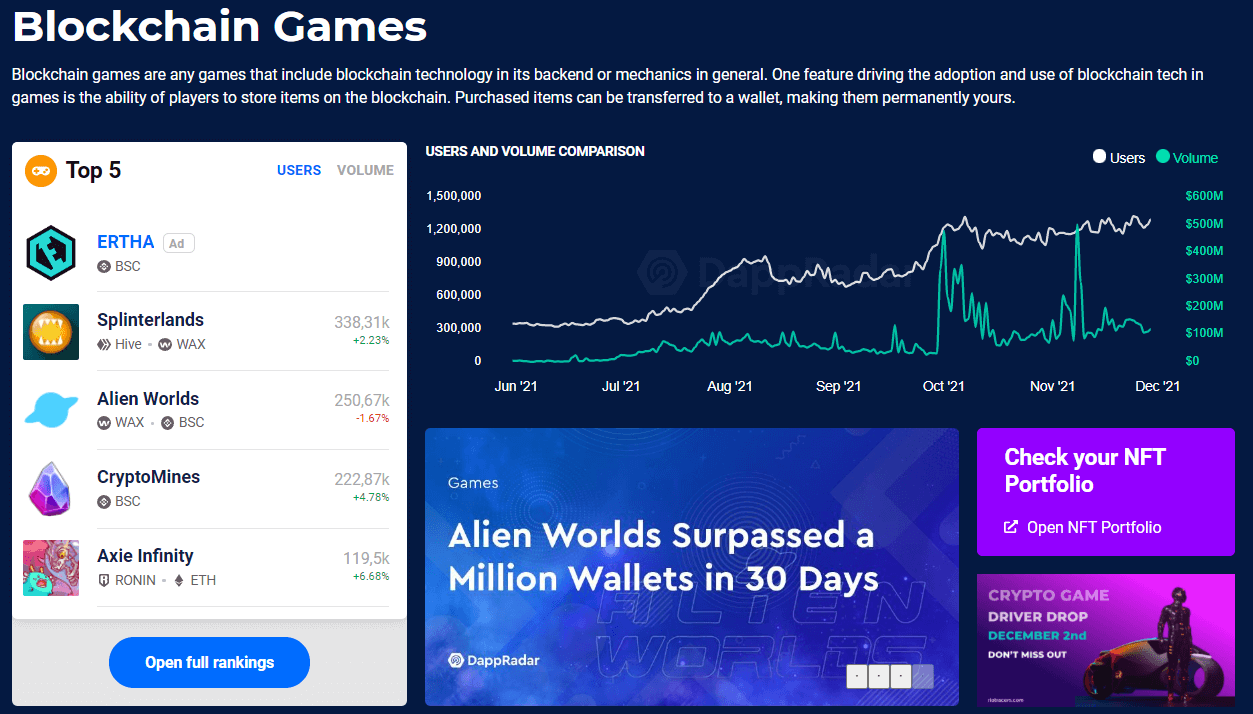
Play2Earn and Learn2Earn game models allow any user to earn tokens and unique items while interacting with players and the ecosystem via blockchain and smart contracts. With the development of decentralized, autonomous organizations, users have joined together via in-game guilds to collectively invest their money, time and effort in blockchain games and metaverses, earning tokens for various achievements.
Metaverses represent one of the most promising trends today, with ubiquitous lockdowns and restrictions contributing greatly toward the transition of users to virtual worlds. Metaverses have tremendous potential, because they can merge and integrate with other spheres and offer an alternative universe with truly unlimited possibilities.
Conclusion
NFTs are an integral part of blockchain games and metaverses, which are rapidly gaining popularity. Non-fungible tokens allow the transfer of value from the real world to the virtual world, serving to powerfully combine both spaces and provide users with virtually limitless possibilities for interaction. And despite the technology still being in its infancy, a large-scale expansion of interaction between players and the ecosystem has already begun to take place. Given their growing popularity and activity in alternative networks, NFTs’ adoption will only continue to rise, going forward.